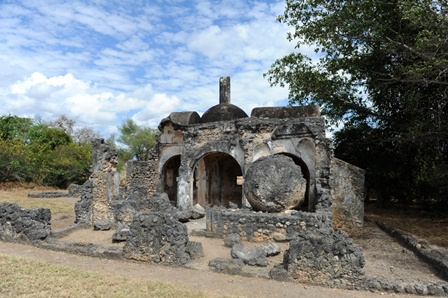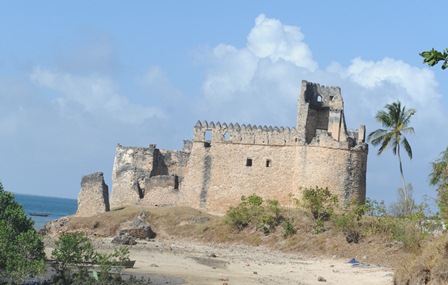By TZ Business News Staff
Ruins dating as far back as the year 1320 have been refurbished at Kilwa, a couple of kilometres south of Tanzania’s business capital, Dar es Salaam, in efforts to preserve East Africa’s historical monuments listed as a world heritage site.
The project has preserved one of Tanzania’s most important heritage sites and created significant economic benefits for the people of Kilwa. The heritage site of Kilwa Kisiwani and Songo Mnara is one of seven UNESCO World Heritage Sites in Tanzania.
This project was implemented in partnership with the Tanzanian government’s Antiquities Division and the World Monuments Fund, with funding from the US Ambassadors Fund for Cultural Preservation, a US Embassy press statement said.
Celebrations to mark the successful conclusion of the project to conserve the ancient ruins at Kilwa Kisiwani and Songo Mnara World Heritage Site were held the week ended on August 22, 2014. Dignitaries present at the celebrations included representatives from Tanzania’s Ministry for Natural Resources & Tourism, and the U.S. Embassy Public Affairs Officer Marissa Maurer.
In June 2014, in recognition of the successful conservation work undertaken by the Antiquities Division and World Monuments Fund, the UNESCO World Heritage Committee voted to remove Kilwa Kisiwani and Songo Mnara from the UNESCO List of World Heritage in Danger.
This international recognition is testimony of the tremendous efforts made towards preserving the site, as well as the generosity of the American people in funding conservation efforts in Tanzania.
The islands of Kilwa Kisiwani and Songo Mnara, which together make up the Kilwa Kisiwani World Heritage Site, are among the most important heritage sites in East Africa, with standing ruins dating back more than 800 years, and has the potential to become one of the foremost heritage destinations in Tanzania.
The overarching objective of the project is to create a framework for balanced development, in which competing demands of tourism, economic development, social change and heritage preservation are balanced for the benefit of all, ensuring the survival of the monument for future generations.
The project commenced in September 2011, implemented by the Antiquities Division of the Ministry of Natural Resources and Tourism and the World Monuments Fund. From the beginning, the project team sought to link preservation efforts to economic benefit, especially in the minds of the islands’ residents.
The World Monuments Fund met with village elders to agree a framework for employment, ensuring that the maximum number of local people were included in the workforce especially women. A total of 600 Kilwa residents have been employed during the course of the project.
The ancient ruins on Kilwa Kisiwani and Songo Mnara are exceptional. On Kilwa Kisiwani, the building known as Husuni Kubwa (or ‘large house’), was built sometime between 1320 and 1333. It is the earliest and by far the largest and most sophisticated surviving major building south of Somalia. Close by is the Great Mosque, which was founded in the 11th century, and which by the 14th century was the largest and most sophisticated mosque south of the Sahara.
Songo Mnara contains the remains of 40 stone houses dating from the 14th to 16th century, some of which are better preserved and more archaeologically intact than any comparable domestic building in East Africa. The Portuguese fort in the area is one of few remaining Portuguese defensive structures in the region.





